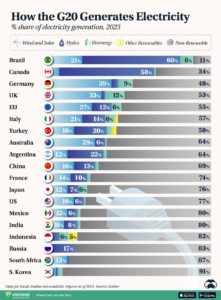Patents for continuous Innovation 🎯 IP Management Pulse #19
Many IP experts in the IP community at I3PM, the HTB-EPO initiative, and other global IP offices and institutions in national and regional innovation systems have asked Prof. Alexander Wurzer: “Where can you be sure not to miss any important IP management content?”. In fact, you have to follow a number of interesting feeds to really keep up with the global developments around IP management. To make this easier he decided to offer his own personal newsletter for IP management. Here you can find the last issues in the archive and also subscribe. A fresh read with all the important IP Management content will be sent to the subscribers every second Thursday at 7.00 (CET), so you can start your day informed.
The next Newsletter will cover the following topics:
Patents for continuous innovation
 The history of the telephone is a 𝐟𝐚𝐬𝐜𝐢𝐧𝐚𝐭𝐢𝐧𝐠 𝐣𝐨𝐮𝐫𝐧𝐞𝐲 𝐨𝐟 𝐜𝐨𝐧𝐭𝐢𝐧𝐮𝐨𝐮𝐬 𝐢𝐧𝐧𝐨𝐯𝐚𝐭𝐢𝐨𝐧. Philipp Reis named his invention the “telephone” in 1861. Alexander Graham Bell secured the first patent for a telephone in 1876. Since then, over 100,000 patents have been filed for telephones, evolving from basic voice transmission devices to today’s sophisticated smartphones.
The history of the telephone is a 𝐟𝐚𝐬𝐜𝐢𝐧𝐚𝐭𝐢𝐧𝐠 𝐣𝐨𝐮𝐫𝐧𝐞𝐲 𝐨𝐟 𝐜𝐨𝐧𝐭𝐢𝐧𝐮𝐨𝐮𝐬 𝐢𝐧𝐧𝐨𝐯𝐚𝐭𝐢𝐨𝐧. Philipp Reis named his invention the “telephone” in 1861. Alexander Graham Bell secured the first patent for a telephone in 1876. Since then, over 100,000 patents have been filed for telephones, evolving from basic voice transmission devices to today’s sophisticated smartphones.
📢 𝐇𝐨𝐰 𝐜𝐚𝐧 𝐰𝐞 𝐜𝐨𝐧𝐭𝐢𝐧𝐮𝐞 𝐭𝐨 𝐩𝐫𝐨𝐭𝐞𝐜𝐭 𝐚𝐧𝐝 𝐞𝐧𝐜𝐨𝐮𝐫𝐚𝐠𝐞 𝐠𝐫𝐨𝐮𝐧𝐝𝐛𝐫𝐞𝐚𝐤𝐢𝐧𝐠 𝐚𝐝𝐯𝐚𝐧𝐜𝐞𝐦𝐞𝐧𝐭𝐬 𝐢𝐧 𝐭𝐡𝐢𝐬 𝐞𝐯𝐞𝐫-𝐞𝐯𝐨𝐥𝐯𝐢𝐧𝐠 𝐟𝐢𝐞𝐥𝐝?
Creating business ecosystems with IP
 IMEC, a leading research institute in nano-electronics, has undergone a significant business model transformation, 𝗽𝗶𝘃𝗼𝘁𝗶𝗻𝗴 𝘁𝗼𝘄𝗮𝗿𝗱𝘀 𝗮𝗻 𝗜𝗣-𝗯𝗮𝘀𝗲𝗱 𝗼𝗿𝗰𝗵𝗲𝘀𝘁𝗿𝗮𝘁𝗶𝗼𝗻 𝗺𝗼𝗱𝗲𝗹 𝘁𝗵𝗮𝘁 𝗿𝗲𝘃𝗼𝗹𝘂𝘁𝗶𝗼𝗻𝗶𝘇𝗲𝗱 𝗶𝘁𝘀 𝗶𝗻𝗻𝗼𝘃𝗮𝘁𝗶𝗼𝗻 𝗲𝗰𝗼𝘀𝘆𝘀𝘁𝗲𝗺 😮.
IMEC, a leading research institute in nano-electronics, has undergone a significant business model transformation, 𝗽𝗶𝘃𝗼𝘁𝗶𝗻𝗴 𝘁𝗼𝘄𝗮𝗿𝗱𝘀 𝗮𝗻 𝗜𝗣-𝗯𝗮𝘀𝗲𝗱 𝗼𝗿𝗰𝗵𝗲𝘀𝘁𝗿𝗮𝘁𝗶𝗼𝗻 𝗺𝗼𝗱𝗲𝗹 𝘁𝗵𝗮𝘁 𝗿𝗲𝘃𝗼𝗹𝘂𝘁𝗶𝗼𝗻𝗶𝘇𝗲𝗱 𝗶𝘁𝘀 𝗶𝗻𝗻𝗼𝘃𝗮𝘁𝗶𝗼𝗻 𝗲𝗰𝗼𝘀𝘆𝘀𝘁𝗲𝗺 😮.
📢 𝗜𝗠𝗘𝗖’𝘀 𝗷𝗼𝘂𝗿𝗻𝗲𝘆 𝘂𝗻𝗱𝗲𝗿𝘀𝗰𝗼𝗿𝗲𝘀 𝘁𝗵𝗲 𝗶𝗺𝗽𝗼𝗿𝘁𝗮𝗻𝗰𝗲 𝗼𝗳 𝘀𝘁𝗿𝗮𝘁𝗲𝗴𝗶𝗰 𝗜𝗣 𝗺𝗮𝗻𝗮𝗴𝗲𝗺𝗲𝗻𝘁 𝗶𝗻 𝗱𝗿𝗶𝘃𝗶𝗻𝗴 𝗶𝗻𝗻𝗼𝘃𝗮𝘁𝗶𝗼𝗻 𝗮𝗻𝗱 𝗰𝗼𝗹𝗹𝗮𝗯𝗼𝗿𝗮𝘁𝗶𝗼𝗻. 𝗛𝗼𝘄 𝗰𝗮𝗻 𝗼𝘁𝗵𝗲𝗿 𝗶𝗻𝗱𝘂𝘀𝘁𝗿𝗶𝗲𝘀 𝗹𝗲𝘃𝗲𝗿𝗮𝗴𝗲 𝗜𝗣 𝘁𝗼 𝗳𝗼𝘀𝘁𝗲𝗿 𝗶𝗻𝗻𝗼𝘃𝗮𝘁𝗶𝗼𝗻 𝗲𝗰𝗼𝘀𝘆𝘀𝘁𝗲𝗺𝘀? 𝗪𝗵𝗮𝘁 𝗰𝗵𝗮𝗹𝗹𝗲𝗻𝗴𝗲𝘀 𝗮𝗻𝗱 𝗼𝗽𝗽𝗼𝗿𝘁𝘂𝗻𝗶𝘁𝗶𝗲𝘀 𝗱𝗼 𝘆𝗼𝘂 𝗳𝗼𝗿𝗲𝘀𝗲𝗲 𝗶𝗻 𝗮𝗱𝗼𝗽𝘁𝗶𝗻𝗴 𝘀𝗶𝗺𝗶𝗹𝗮𝗿 𝗜𝗣 𝘀𝘁𝗿𝗮𝘁𝗲𝗴𝗶𝗲𝘀 𝗶𝗻 𝘆𝗼𝘂𝗿 𝗳𝗶𝗲𝗹𝗱?
IP for the digital transformation
 NVIDIA’s journey from a niche GPU developer in 1993 to a $1.8 trillion tech titan in 2024 is a testament to its strategic foresight and adaptability. Initially focused on gaming, NVIDIA has expanded its horizons, notably with 𝐍𝐕𝐈𝐃𝐈𝐀 𝐃𝐑𝐈𝐕𝐄 — 𝐚 𝐩𝐥𝐚𝐭𝐟𝐨𝐫𝐦 𝐫𝐞𝐯𝐨𝐥𝐮𝐭𝐢𝐨𝐧𝐢𝐳𝐢𝐧𝐠 𝐚𝐮𝐭𝐨𝐧𝐨𝐦𝐨𝐮𝐬 𝐝𝐫𝐢𝐯𝐢𝐧𝐠 😮. This shift exemplifies NVIDIA’s business model transformation and its innovative IP strategy.
NVIDIA’s journey from a niche GPU developer in 1993 to a $1.8 trillion tech titan in 2024 is a testament to its strategic foresight and adaptability. Initially focused on gaming, NVIDIA has expanded its horizons, notably with 𝐍𝐕𝐈𝐃𝐈𝐀 𝐃𝐑𝐈𝐕𝐄 — 𝐚 𝐩𝐥𝐚𝐭𝐟𝐨𝐫𝐦 𝐫𝐞𝐯𝐨𝐥𝐮𝐭𝐢𝐨𝐧𝐢𝐳𝐢𝐧𝐠 𝐚𝐮𝐭𝐨𝐧𝐨𝐦𝐨𝐮𝐬 𝐝𝐫𝐢𝐯𝐢𝐧𝐠 😮. This shift exemplifies NVIDIA’s business model transformation and its innovative IP strategy.
📢 𝐇𝐨𝐰 𝐜𝐚𝐧 𝐜𝐨𝐦𝐩𝐚𝐧𝐢𝐞𝐬 𝐛𝐚𝐥𝐚𝐧𝐜𝐞 𝐢𝐧𝐧𝐨𝐯𝐚𝐭𝐢𝐨𝐧 𝐚𝐧𝐝 𝐈𝐏 𝐩𝐫𝐨𝐭𝐞𝐜𝐭𝐢𝐨𝐧 𝐭𝐨 𝐝𝐫𝐢𝐯𝐞 𝐝𝐢𝐠𝐢𝐭𝐚𝐥 𝐭𝐫𝐚𝐧𝐬𝐟𝐨𝐫𝐦𝐚𝐭𝐢𝐨𝐧 𝐞𝐟𝐟𝐞𝐜𝐭𝐢𝐯𝐞𝐥𝐲?
Agility and IP
 Design Thinking is a human-centered approach to problem-solving that emphasizes empathy, creativity, and iterative testing. It involves five key phases: 𝐄𝐦𝐩𝐚𝐭𝐡𝐢𝐳𝐞, 𝐃𝐞𝐟𝐢𝐧𝐞, 𝐈𝐝𝐞𝐚𝐭𝐞, 𝐏𝐫𝐨𝐭𝐨𝐭𝐲𝐩𝐞, 𝐚𝐧𝐝 𝐓𝐞𝐬𝐭.
Design Thinking is a human-centered approach to problem-solving that emphasizes empathy, creativity, and iterative testing. It involves five key phases: 𝐄𝐦𝐩𝐚𝐭𝐡𝐢𝐳𝐞, 𝐃𝐞𝐟𝐢𝐧𝐞, 𝐈𝐝𝐞𝐚𝐭𝐞, 𝐏𝐫𝐨𝐭𝐨𝐭𝐲𝐩𝐞, 𝐚𝐧𝐝 𝐓𝐞𝐬𝐭.
📣 𝐇𝐨𝐰 𝐜𝐚𝐧 𝐰𝐞 𝐟𝐮𝐫𝐭𝐡𝐞𝐫 𝐢𝐧𝐭𝐞𝐠𝐫𝐚𝐭𝐞 𝐃𝐞𝐬𝐢𝐠𝐧 𝐓𝐡𝐢𝐧𝐤𝐢𝐧𝐠 𝐩𝐫𝐢𝐧𝐜𝐢𝐩𝐥𝐞𝐬 𝐢𝐧𝐭𝐨 𝐈𝐏 𝐦𝐚𝐧𝐚𝐠𝐞𝐦𝐞𝐧𝐭 𝐭𝐨 𝐞𝐧𝐡𝐚𝐧𝐜𝐞 𝐢𝐧𝐧𝐨𝐯𝐚𝐭𝐢𝐨𝐧? 𝐖𝐡𝐚𝐭 𝐜𝐡𝐚𝐥𝐥𝐞𝐧𝐠𝐞𝐬 𝐡𝐚𝐯𝐞 𝐲𝐨𝐮 𝐟𝐚𝐜𝐞𝐝 𝐢𝐧 𝐚𝐥𝐢𝐠𝐧𝐢𝐧𝐠 𝐈𝐏 𝐬𝐭𝐫𝐚𝐭𝐞𝐠𝐢𝐞𝐬 𝐰𝐢𝐭𝐡 𝐚𝐠𝐢𝐥𝐞 𝐝𝐞𝐯𝐞𝐥𝐨𝐩𝐦𝐞𝐧𝐭 𝐩𝐫𝐨𝐜𝐞𝐬𝐬𝐞𝐬?
Measures against counterfeits
 𝐓𝐡𝐢𝐧𝐤 𝐲𝐨𝐮 𝐜𝐚𝐧 𝐬𝐩𝐨𝐭 𝐚 𝐟𝐚𝐤𝐞? 𝐓𝐡𝐢𝐧𝐤 𝐚𝐠𝐚𝐢𝐧! Counterfeit products are becoming increasingly sophisticated, making it harder than ever to distinguish them from the real deal😯. But the consequences of buying fakes are far from trivial. From health risks to funding criminal activities, the impact is vast and alarming.
𝐓𝐡𝐢𝐧𝐤 𝐲𝐨𝐮 𝐜𝐚𝐧 𝐬𝐩𝐨𝐭 𝐚 𝐟𝐚𝐤𝐞? 𝐓𝐡𝐢𝐧𝐤 𝐚𝐠𝐚𝐢𝐧! Counterfeit products are becoming increasingly sophisticated, making it harder than ever to distinguish them from the real deal😯. But the consequences of buying fakes are far from trivial. From health risks to funding criminal activities, the impact is vast and alarming.
📢 𝐈𝐏 𝐂𝐨𝐦𝐦𝐮𝐧𝐢𝐭𝐲, 𝐰𝐡𝐚𝐭 𝐬𝐭𝐞𝐩𝐬 𝐚𝐫𝐞 𝐲𝐨𝐮 𝐭𝐚𝐤𝐢𝐧𝐠 𝐭𝐨 𝐜𝐨𝐦𝐛𝐚𝐭 𝐜𝐨𝐮𝐧𝐭𝐞𝐫𝐟𝐞𝐢𝐭𝐢𝐧𝐠? 𝐇𝐨𝐰 𝐜𝐚𝐧 𝐰𝐞 𝐛𝐞𝐭𝐭𝐞𝐫 𝐞𝐝𝐮𝐜𝐚𝐭𝐞 𝐜𝐨𝐧𝐬𝐮𝐦𝐞𝐫𝐬 𝐨𝐧 𝐭𝐡𝐞 𝐫𝐢𝐬𝐤𝐬 𝐨𝐟 𝐟𝐚𝐤𝐞 𝐩𝐫𝐨𝐝𝐮𝐜𝐭𝐬?
Whom to follow
Janice Denoncourt informs you on LinkedIn about the current use and value increases of intangible assets in companies with a focus on the UK as well as IP-backed finance. As Director of the Intellectual Property Awareness Network and ambassador of the IP Business Academy she deeply cares about awareness-raising activities in the field of intellectual property.
John Pryor shows you on his LinkedIn feed how companies protect their knowledge with trade secrets in the age of job hopping and co-creation. He does this by using practical examples from various industries, from biotechnology to digital media. Finally, he supports the IP Business Academy as an ambassador to raise awareness for intellectual property management.
Unlocking Success: How Oxylabs Leverages IP Strategy to Drive Innovation
At Oxylabs, a leading provider of web data intelligence solutions from Lithuania, continuous innovation coupled with due attention to intellectual property (IP) rights is a cornerstone of success. The company’s IP strategy exemplifies how building IP awareness, adopting a rigorous approach to IP clauses in contracts, and understanding IP broadly can fuel innovation and drive success.
IP strategy applied in practice: Interview with MIPLM graduate Adrien Lemoine
As intellectual property is the realm of intellectual creations, it affects every aspect of life, from medicine to art, technology, agriculture, etc. Every innovator is involved, and thanks to numerous organisations around the world, we are all invited to learn more about intellectual property and how it works.
IP and renewable energies
With the increasing shift to ESG and SDG, companies in the energy sector are rapidly restructuring the way they generate our electricity. While some countries may utilise their rivers for hydropower, most countries are turning to wind and solar power. The companies that manufacture solar panels and wind turbines are therefore rapidly expanding their business and must also adapt their IP strategies to the new competitive environment.
The digitalisation of the wind turbine industry was also the topic of Nicky Wennemer‘s master thesis, which is presented in this article.
Indicators and determinants
Since decades, a high number of empirical studies have been carried out with different indicators for the determination of the value of patents. So, a huge set of indicators which can be used for patent valuation is available. For the practical execution of a valuation, it is necessary to develop a valuation model on the basis of these value indicators.
The available value indicators have systematically different origins. The bibliographic and procedural value indicators and text parameters have their origin in the patent system. These parameters use data deposited in the patent documents and generated in the patent system. Also, parameters which lie outside of the patent system can be added.






